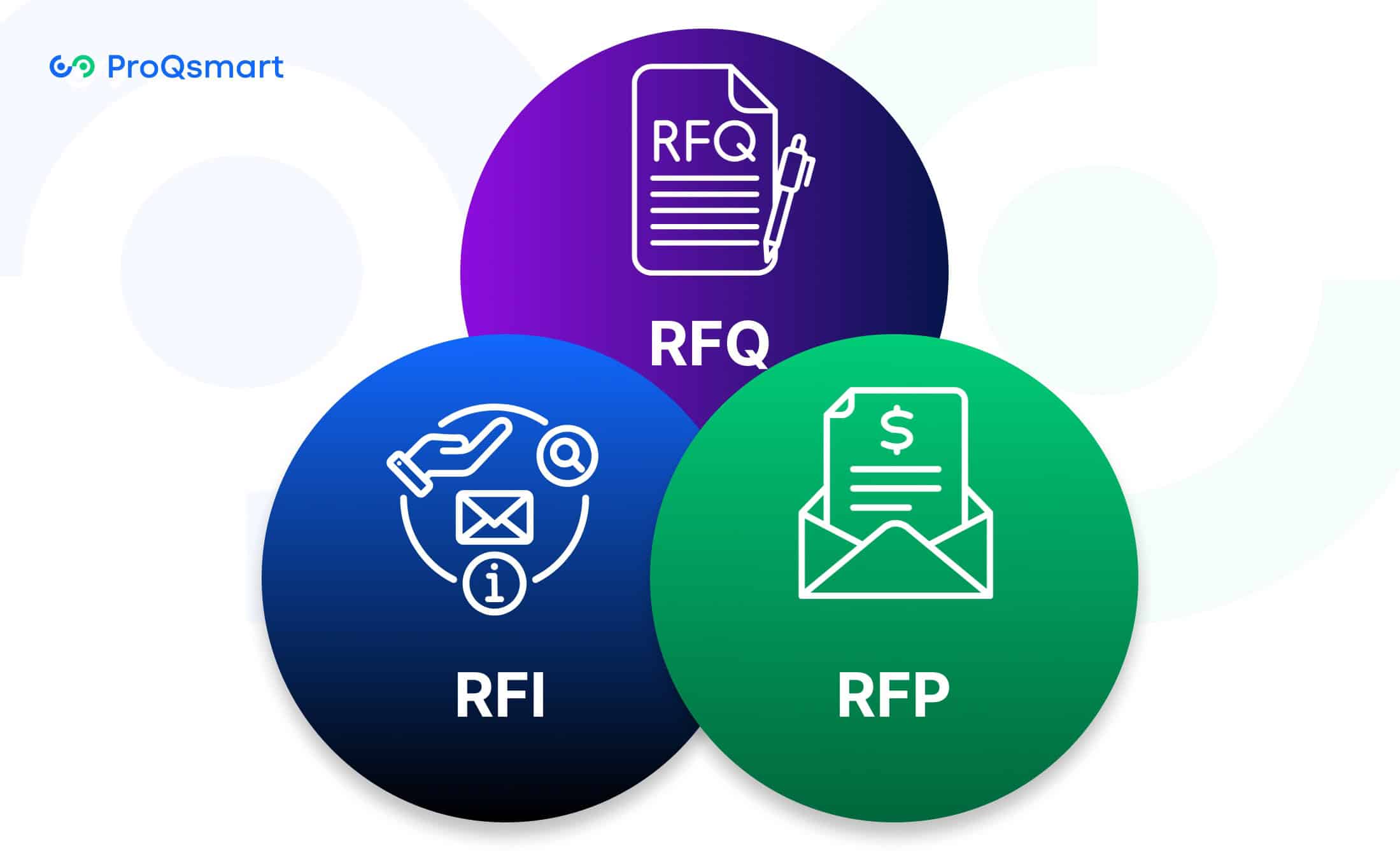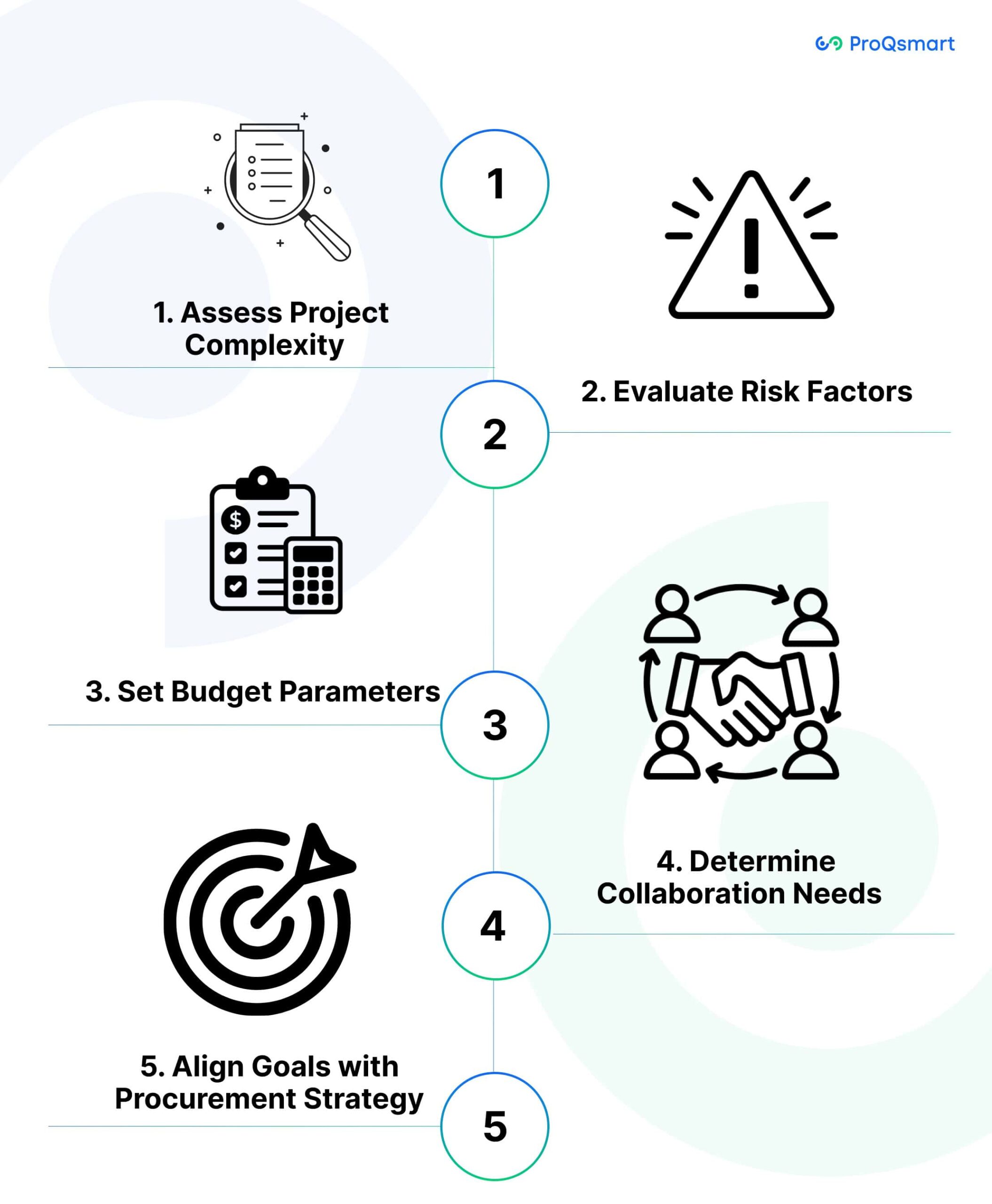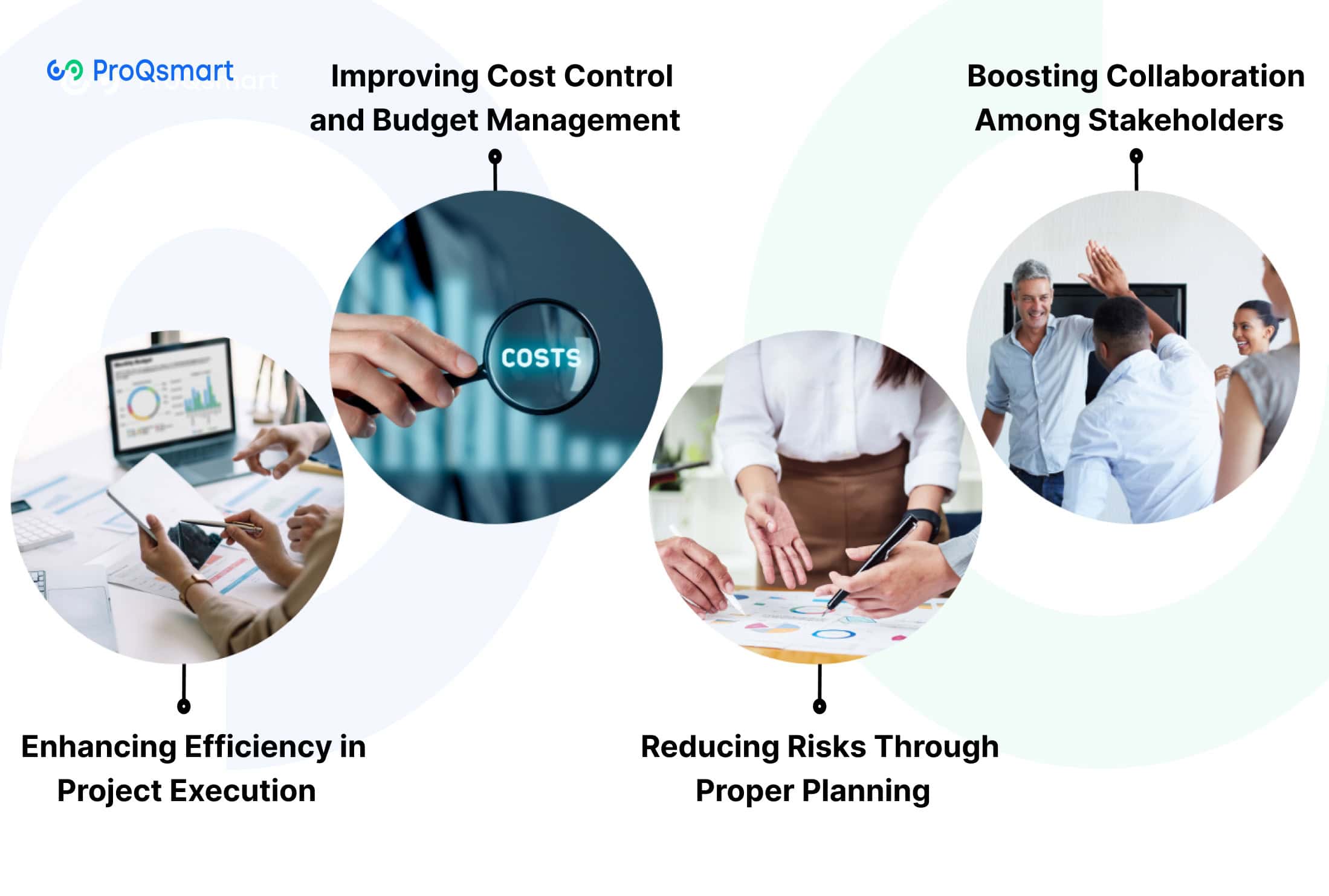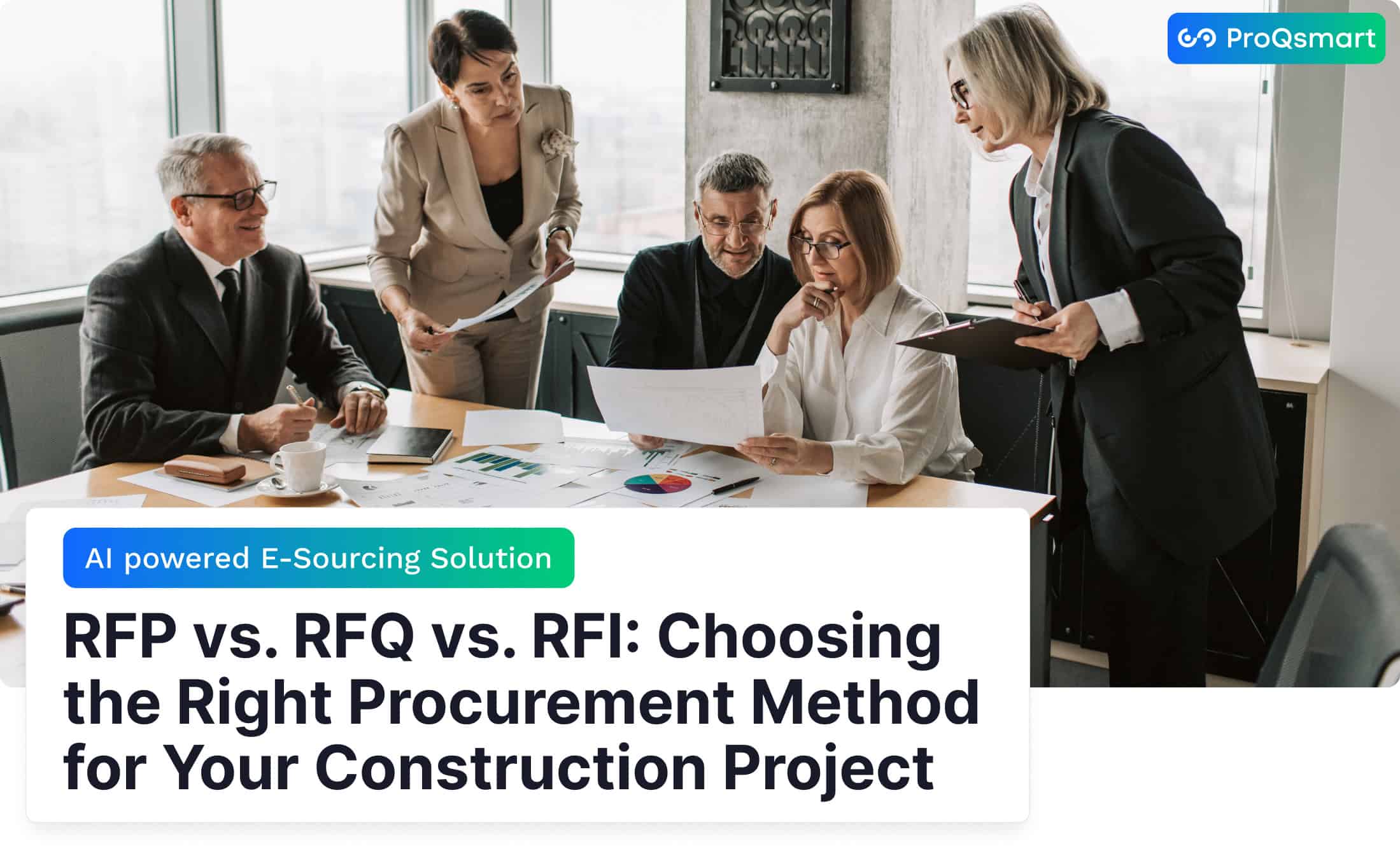RFP, RFQ and RFI are valuable tools in procurement that, when used properly, can promote effective, efficient sourcing decisions.
RFP, or Request for Proposal, collects detailed proposals from vendors when needs are complex. RFQ, or Request for Quotation, emphasizes price for well-established requirements, so it works best for simple buy. RFI, or Request for Information, is used to solicit information about the capabilities of various suppliers and to obtain general market information, often without a commitment.
These tools help procurement teams choose the most qualified vendors and contractors, make certain they receive competitive pricing, and make sure purchases support overall organizational goals.
By knowing how they differ and what they are used for, companies can improve their procurement strategies and make better business decisions. Understanding and executing these processes lays the foundation for an efficient operation and a high-quality supplier ecosystem, powering success well into the future.
Understanding Procurement Methods
Procurement methods are common but critical windows through which governments and firms procure goods, services, or works. As in any detailed undertaking, construction projects require a strict adherence to timelines, budgets, and quality. Selecting the appropriate procurement method is an important first step toward successful outcomes.
By knowing which options are available and what they entail, professionals can take steps to maximize efficiency, compliance, and stakeholder satisfaction.
Why Procurement Methods Matter in Construction
Procurement methods are key to managing project costs and making the best use of our limited resources. A procurement method well-selected makes contractor selection much easier by matching the contractor’s expertise to the project’s needs.
Issuing an RFI (Request for Information) provides a significant window into available vendor capabilities. This preliminary step assists the agency in narrowing options before moving on to more detailed proposals with RFQs or RFPs.
Quality is yet another important outcome. Procurement methods such as IPD help promote teamwork, allowing everyone involved to create innovative solutions and minimize costly rework. This, in turn, improves stakeholder satisfaction, as stakeholders receive projects on schedule and within the agreed-upon scope.
Standardizing RFx documents increases transparency and accuracy. It addresses challenges such as divergent data formats and manual data entry that procurement teams often face every day, courtesy of AI-powered tools.
Key Factors Influencing Procurement Choices
Considerations like the size and complexity of the project, regulatory requirements, and market conditions are critical factors in determining the best procurement approach.
Market conditions influence the procurement strategy. In high-stakes competitive markets, RFIs and RFQs allow for data-driven decisions through the collection of detailed vendor information.
For instance, an RFI can expose a supplier’s past experiences and solutions, allowing you to align closely with what the project requires. Mastering these RFx tools greatly speeds up processes and helps you lay the groundwork for strategic sourcing successes.
Exploring RFI RFQ and RFP
Whether in procurement or anywhere else, open dialogue and data-driven decisions are key. This is where RFI (Request for Information), RFQ (Request for Quotation), and RFP (Request for Proposal) come into play. While each document is separate and distinct, they are all designed to inform and shape the interaction between buyers and suppliers.
Collectively, they can simplify procurement processes, mitigate risks, and encourage collaboration. Below, we dive deeply into their distinct roles and uses.
What Is RFI?

An RFI is an early stage document that vendors use to solicit general information to inform the process from potential suppliers. It’s a valuable tool for buyers to better understand a supplier’s qualifications, past performance, and solutions offered.
An RFI is typically the first step in narrowing a long list of potential candidates. From there, you can advance to more detailed asks. For example, if your company is exploring software options for managing SaaS subscriptions, an RFI might ask vendors about their features, customer support, and scalability.
RFIs are most effective when used early in the exploratory stage of procurement, laying the groundwork for more focused, in-depth questions. They are not meant to solicit pricing information, but rather to gauge qualifications and fit for the required expertise.
Utilizing RFIs increases efficiency by leaps and bounds. In turn, buyers can more easily and conveniently find the most appropriate candidates, maximizing time and cost savings.
What Is RFQ?

An RFQ is typically used when price is the main factor. It asks for suppliers to submit a lot of information about costs associated with providing a product or service. For example, if a construction company needed materials, they would send out an RFQ with an indication of quantities, dimensions, and the level of quality needed.
These clear, detailed specifications allow for a level playing field, preventing favoritism, and allowing suppliers to quote accurately. The RFQ’s structured approach works to the buyer’s benefit as it allows for systematic comparison of costs.
By matching supplier capabilities to specific requirements, the approach allows for clear decision-making and cost savings.
What Is RFP?

An RFP, or request for proposal, is a formal invitation to suppliers to submit detailed proposals that meet a buyer’s needs. Unlike RFIs, which are for exploration, or RFQs, which are for price only, RFPs get into the weeds on complex project specifics.
Let’s say a manufacturing company wants to implement a new production system. They may choose to release an RFP to solicit specific solutions, project timelines and implementation approaches. RFPs are best for complicated projects where creativity and unique execution are key.
Well-defined requirements within an RFP make it easier for proposals to be completely aligned with city objectives, resulting in successful public-private partnerships.
“Well-structured RFPs have a lot to recommend them. They lead to better project outcomes, better alignment with project goals, and a greater likelihood that the most qualified contractor is selected”.
Download Editable RFP Template for your industry!
Differences Between RFI RFQ and RFP

Document Type | Purpose | Usage | Outcome |
RFI | Gather general information | Exploratory phase | Shortlist potential suppliers |
RFQ | Request pricing details | Specific product/service | Compare costs and supplier offerings |
RFP | Solicit detailed proposals | Complex projects | Select tailored solutions |
How to Choose the Right Procurement Method

Choosing the right procurement method is a key aspect to the success of any project. The decision affects every aspect from supplier choice all the way down to method of project delivery. Tools such as RFI, RFQ, and RFP offer valuable, structured frameworks to different stages of the procurement process. This facilitates more effective evaluations of vendors by decision makers, and greater alignment of strategies with the unique needs of various projects.
Below, we explore important factors to help inform this decision.
1. Assess Project Complexity
Knowing your complexity of the project goes a long way. In general, complex projects are those that include multiple stakeholders, varied or complex deliverables, or where there is significant uncertainty. For example, an RFI is especially useful in the initial phase of a complicated project where requirements need to be clearly identified.
It provides an opportunity for organizations to solicit information about a potential supplier’s experience and capabilities. Alternatively, less complicated projects with more defined requirements can go straight to RFQ, avoiding the exploratory phase and having the best of both worlds.
Matching procurement methods to level of complexity maximizes effective use of limited resources. It helps improve stakeholder engagement and avoid misalignments between project needs and procurement approaches.
2. Evaluate Risk Factors
Every procurement strategy carries inherent risks. Using an RFP for intricate projects provides a detailed overview of tailored solutions, mitigating risks tied to oversights or misaligned expectations. Risk assessment includes evaluating vendor credibility, which platforms like ProQsmart simplify through supplier performance monitoring.
For example, ProQsmart’s AI-driven tools automate workflows and pre-qualification processes, ensuring compliance while reducing exposure to potential risks. Structured procurement planning, supported by transparent data, enables informed decisions that prioritize project integrity.
3. Set Budget Parameters
Budget availability, or lack thereof, is a key factor that influences the entire procurement process from planning to execution. Cost-conscious organizations use RFQs to get competitive pricing on known requirements. ProQsmart’s budget-driven procurement feature provides real-time tracking to keep businesses within their monetary constraints.
Through improved transparency around budget expectations, firms can help set realistic expectations for project scopes, keep the focus on the financial objectives, and build trust with all parties involved.
4. Determine Collaboration Needs
Cooperation becomes even more important on projects that require collaborating with complex cross-functional teams or through the use of subcontractors. Real-time collaboration tools such as ProQsmart improve real-time collaboration and keep subcontractor management organized while providing clear communication.
Procurement methods, especially RFPs, promote collaboration by forcing key stakeholders to weigh in on vendor evaluations and project designs.
5. Align Goals with Procurement Strategy
Without clearly defined objectives, success can be elusive. By using RFPs or RFIs, organizations are able to focus supplier proposals on the overall goals of the project. Stakeholder input helps keep these strategies targeted on the most impactful outcomes.
Benefits of Strategic Procurement Planning

For organizations, strategic procurement planning is more important than ever. It enables them to get the most out of their resources, avoid costs, and mitigate risks. By adopting a structured and proactive approach, businesses can enhance project execution, control budgets, and achieve better outcomes across various initiatives.
Here, we take a closer look at the tangible benefits of strategic procurement planning.
Enhancing Efficiency in Project Execution
Better procurement planning directly translates to better project efficiency with a focus on developing a clear, predictable process and timeline. Agile procurement approaches, including automated workflows and e-tendering platforms like ProQsmart, remove extra red tape and miscommunication.
With ProQsmart, document management and supplier communications are automated. This allows teams to focus on their broader strategic goals, rather than being weighed down by administrative burdens.
Efficiency is further enhanced by continuous improvement practices, like regularly measuring supplier performance and revising procurement strategies accordingly. By utilizing data-driven insights, organizations can optimize their approaches over time to make continuous improvement a reality.
Improving Cost Control and Budget Management
Strategic procurement is critical for controlling costs through better upfront budget alignment and ongoing tracking. Tools such as ProQsmart’s budget-driven procurement feature allow users to see where their money is going, helping them make sure their money goes the furthest.
This level of transparency, along with accurate forecasting, allows organizations to avoid major overspending ahead of time and adapt plans accordingly. Consolidating vendor selection processes can reduce SaaS costs by as much as 30%.
Doing so encourages businesses to seek out the most cost-effective solutions and rid the organization of costly shadow IT. By zeroing in on price and quality of vendors, organizations ensure they get the best deal without sacrificing quality.
Reducing Risks Through Proper Planning
Strategic procurement planning reduces risks by identifying issues before they arise. ProQsmart offers extensive information on vendors’ security certifications and best practices, allowing enterprises to make informed decisions and protect sensitive data.
Contingency planning is just as important – it allows organizations to respond to unforeseen disruptions without derailing the course of a project. Risk management creates safer communities by anticipating where harm could happen and taking steps to prevent it from affecting people’s lives.
This strategic approach goes further than merely protecting valuable investments. It helps meet regulatory requirements.
Boosting Collaboration Among Stakeholders
Collaborative procurement processes build trust between public agencies and stakeholder communities, fostering ongoing communication and alignment of objectives. ProQsmart’s real-time collaboration tools make it easier to work together, keeping everyone on your team connected and updated.
By encouraging early transparency and inclusivity, organizations can unite all parties behind common goals and maximize the potential for project success.
Role of Modern Procurement Software
Gathering Stakeholder Input for Criteria
It’s no secret that modern procurement software has revolutionized the construction and manufacturing industries. It offers robust solutions that automate workflows and deliver meaningful efficiencies. Through the proper application of technology, procurement teams can improve operational efficiency, maintain compliance, and drive strategic objectives all at once.
How Technology Simplifies Procurement Processes
Procurement software streamlines documentation and communication by centralizing data and providing a unified platform for managing RFx documents, supplier records, and contracts. Now, teams can seamlessly access and share real-time information, putting more time back into their day and cutting down on administrative busywork.
For instance, standardized RFx templates mean a quick start from a style and spelling perspective and avoid VPN tunnels of repetitive formatting. This is where automation becomes key to reducing errors and delays caused by manual processes.
Processes like bid evaluations, invoice matching and approval processes are automated, allowing for quicker turnaround times. This is especially important in construction projects where, like the often costly change orders noted above, delays can increase costs significantly.
For example, procurement platforms like ProQsmart automate the entire workflow process, guaranteeing compliance and transparency all while saving money. Their access to real-time data is another major benefit.
Procurement departments can track supplier performance, proactively address risks, and create informed decisions with data at their fingertips. For instance, teams benefit from real-time analytics on overall spending and supplier compliance. This enables them to easily pinpoint gaps and refine their sourcing strategies.
Features of Effective Procurement Tools
- Centralized data management
- Automated workflows
- Advanced analytics, play a key role.
ProQsmart combines,
- E-Tendering
- Supplier relationship management
- Subcontractor management.
This unbeatable combination provides both full visibility and control of your entire procurement operations.
Beyond data and intelligence, user-friendly interfaces are a must. User-friendly dashboards and intuitive navigation encourage stakeholder involvement, leading to widespread adoption across departments.
Analytics capabilities aid in procurement strategy optimization by providing intelligence on potential cost savings, supplier performance, and compliance metrics.
Impact of Software on Decision-Making and Success
Procurement software plays a major role in this, greatly improving the quality of data-driven decision making through real-time visibility into spend, suppliers, and contracts. Solutions such as ProQsmart better connect procurement with available budgets, monitor capital expenditure, and maintain compliance with regulations.
By minimizing redundancies and fostering better collaboration with suppliers, this integration results in increased project success rates. Adopting such solutions are long past being optional.
As more than 35% of procurement teams begin adopting AI, solutions such as ProQsmart are enabling procurement to become a highly strategic function.
Conclusion
Depending on your intent and the nature of your project. Each approach has its unique advantages. With strategic planning and the right tools, the process can be a much more seamless one. Today’s procurement software makes it easier than ever to track your RFPs, maintain central project data, and maintain the competitive edge that makes your projects possible.
A clear and thorough procurement process saves you time and money, but most importantly, it establishes positive supplier relationships. With the right information and the right approach, you can make smart decisions that will set you up for long-term success.
Want to streamline your entire RFP/RFQ/RFI process? See how ProQsmart’s intuitive platform helps you manage every stage, from initial planning to final selection, with efficiency and ease. Book a Demo today!




